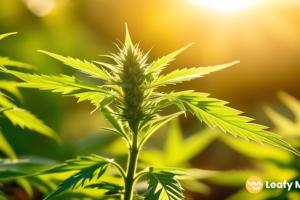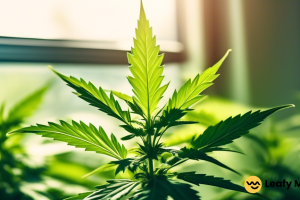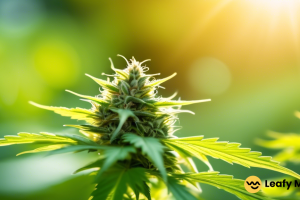As the popularity of cannabis continues to grow, consumers are constantly exploring new and innovative ways to enjoy the plant. Two of the most common methods of consumption are vaping and smoking. With each method offering unique experiences and advantages, it can be challenging for users to determine which is best suited for their needs.
This article will weigh the pros and cons of vaping cannabis versus smoking, examining factors such as health implications, potency, and overall experience to help you decide the ideal way to consume cannabis.
Vaping vs. Smoking Cannabis: What’s the Difference?
As cannabis use becomes more widespread, enthusiasts and medical users alike are exploring different methods of consumption to find the one that best suits their needs. Two of the most popular ways to consume cannabis are vaping and smoking. Both methods offer unique experiences and advantages, but they also come with their own set of drawbacks. In this section, we’ll compare the pros and cons of vaping and smoking cannabis, shedding light on the critical differences between these two consumption methods for new and persistent cannabis users.
Pros and Cons of Vaping
Pros:
- Reduced toxicants: Vaping devices for cannabis produces fewer harmful chemicals and toxicants than smoking, potentially reducing the risk of respiratory issues.
- Discreet and convenient: Vaporizers may resemble regular cigarettes because they are often compact but produce much less odor, making them more discreet and convenient for on-the-go use.
- Precise temperature control: Many vaporizers offer temperature control options, allowing users to customize their cannabis experience and extract specific cannabinoids and terpenes.
- Efficient consumption: Vaping cannabis can be more efficient than smoking, requiring less product to achieve the desired effects.
Cons:
- Upfront cost: Vaporizers, especially high-quality devices with advanced features, can be expensive.
- Learning curve: New users may need time to familiarize themselves with proper vaping techniques and device maintenance and learn to use liquid or vape juice.
- Limited social aspect: Vaping cannabis may not have the same social appeal or ritualistic aspects as traditional smoking.
- Long-term health effects: The long-term health implications of vaping cannabis are not yet fully understood, and some users may still experience respiratory issues.
Pros and Cons of Smoking
Pros:
- Traditional experience: Many cannabis users appreciate the familiarity and ritual of smoking, whether a joint, pipe, or bong.
- Lower initial cost: Smoking cannabis generally requires less upfront investment than purchasing a vaporizer.
- Immediate effects: The effects of smoking cannabis are often felt immediately, providing instant relief or enjoyment for users.
- Social bonding: Sharing a joint or passing around a pipe can foster a sense of camaraderie and social connection among users.
Cons:
- Health risks: Smoking cannabis can produce harmful chemicals and tar, increasing the risk of respiratory issues and other health concerns.
- Strong odor: The smell of smoked cannabis is more pungent and lingering than vapor, potentially drawing unwanted attention.
- Less efficiency: Smoking cannabis may be less efficient than vaping, as some active compounds are lost during combustion.
- Limited temperature control: Smoking cannabis does not offer the same level of temperature control as vaping, making it more challenging to target specific cannabinoids and terpenes.
The Science of Human Cannabis Consumption
Cannabis, also known as marijuana, is derived from the Cannabis sativa plant and contains over 100 compounds called cannabinoids. Among these, the primary active ingredients are delta-9-tetrahydrocannabinol (THC) and cannabidiol (CBD). THC is responsible for the plant’s psychoactive effects, while CBD is believed to have various therapeutic properties without inducing a “high.”
When cannabis is consumed, cannabinoids enter the bloodstream and interact with the human body’s endocannabinoid system (ECS). The ECS plays a crucial role in maintaining homeostasis by regulating various physiological processes such as mood, appetite, pain sensation, and immune response. Cannabinoid receptors, primarily CB1 and CB2, are the primary targets of THC and CBD within the ECS.
Different methods of cannabis consumption impact the onset, duration, and intensity of its effects. When smoked or vaped, cannabinoids are rapidly absorbed into the bloodstream through the lungs, resulting in a faster onset of effects. On the other hand, oral consumption, such as edibles or tinctures, leads to the slower onset and longer-lasting effects due to the cannabinoids being metabolized by the liver before entering the bloodstream.
A study published in Scientific Reports examined the differences in toxicant exposure between cannabis smoking and vaping. The researchers found that vaping cannabis produced significantly fewer toxicants than smoking, including reduced carbon monoxide, polycyclic aromatic hydrocarbons, and volatile organic compounds. This suggests that vaping may offer a less harmful alternative to smoking cannabis, though it is essential to note that the long-term health effects of vaping are not yet fully understood.
Understanding the science behind human cannabis consumption is crucial for making informed decisions about the most suitable method. As cannabinoids interact with the endocannabinoid system, the method of consumption can significantly impact the onset and duration of effects. While vaping cannabis reduces toxicant exposure, further research is needed to determine its long-term health implications and best practices to avoid developing marijuana use disorders.
Does Vaping Cannabis Have Any Impact on Fitness and Exercise Performance?
Vaping cannabis may have potential fitness benefits as it can help with relaxation, pain relief, and improved sleep, all of which can contribute to better exercise performance. Some athletes have reported using cannabis to help with focus and endurance during workouts, although research on this topic is still limited.
7 Alternative Consumption Methods
For those who wish to enjoy the benefits of cannabis without smoking or vaping, a diverse range of alternative consumption methods is available. These options cater to various preferences and lifestyles, offering unique experiences and advantages. This section will explore seven alternative methods for consuming cannabis, discussing how they work and their respective benefits.
Edibles
Edibles are cannabis-infused food or drink products that provide a discreet and tasty way to consume cannabis. As cannabinoids are ingested and metabolized by the liver, the onset of effects is typically slower, and the duration is longer than smoking or vaping. This makes edibles suitable for those seeking sustained relief or a prolonged experience. It is essential to start with a low dose and gradually increase it to avoid overconsumption, as the delayed effects can sometimes catch users off-guard.
Tinctures
Tinctures are alcohol or oil-based cannabis extracts that can be taken sublingually (under the tongue) or added to food and beverages. They offer precise dosing and rapid absorption into the bloodstream, providing a faster onset of effects than edibles. Tinctures are an excellent choice for those who want a discreet, smoke-free, easy-to-use cannabis option with customizable dosages.
Capsules
Cannabis capsules are another oral consumption method that provides a discreet and controlled way to consume cannabis. Similar to edibles, capsules have a slower onset and longer-lasting effects. They are suitable for those who prefer a familiar, pharmaceutical-like approach to cannabis consumption or require consistent and precise dosing for medical purposes.
Topicals
Topical cannabis products, such as creams, balms, and lotions, are applied directly to the skin to target localized pain, inflammation, or skin conditions. Since the cannabinoids do not enter the bloodstream, topicals typically do not produce psychoactive effects, making them an ideal choice for users seeking targeted relief without the “high.”
Transdermal Patches
Transdermal patches are adhesive patches infused with cannabis that deliver cannabinoids directly into the bloodstream through the skin. They provide a controlled and consistent release of cannabinoids over an extended period, making them an excellent option for those requiring long-lasting relief or steady micro-dosing throughout the day.
Suppositories
Cannabis suppositories are inserted rectally or vaginally and offer rapid absorption into the bloodstream, providing fast-acting and potent relief. This method is particularly beneficial for individuals experiencing gastrointestinal issues or those who cannot consume cannabis orally. However, it is essential to be cautious with dosing, as suppositories can produce strong effects.
Dabbing
Dabbing involves the consumption of highly concentrated cannabis extracts, such as shatter, wax, or rosin, by heating them on a specialized device called a dab rig. This method provides rapid and potent effects, making it popular among experienced users seeking an intense cannabis experience. However, dabbing can be overwhelming for beginners and may not suit those with low tolerances or novice users.
Young People & Vaping/Smoking
The prevalence of vaping and smoking among young people is a growing public health concern. As the use of electronic cigarettes and cannabis becomes increasingly popular, it is essential to understand the implications of these consumption methods on adolescents and young adults. This section will discuss the trends, risks, and consequences of vaping and smoking among young people.
Trends in Vaping and Smoking: Over the past decade, there has been a significant shift in nicotine and cannabis consumption habits among young people. While traditional cigarette smoking rates have declined, the popularity of e-cigarettes and vape pens has surged. The appealing flavors, discreet design, and perceived lower health risks contribute to the growing popularity of e-cigarettes among adolescents and young adults. In addition, the increasing social acceptance and legalization of cannabis in many regions have led to a rise in cannabis use among young people, particularly in vaping.
Health Risks and Consequences: The developing brains of young people are particularly vulnerable to the harmful effects of nicotine and cannabis and developing substance abuse disorders. Nicotine addiction from e-cigarettes can alter brain chemistry, impair cognitive function, cause learning difficulties, and increase impulsivity. Moreover, research suggests that young people who use e-cigarettes are more likely to start smoking traditional cigarettes in the future.
Cannabis use during adolescence has been associated with impaired memory, attention, and cognitive function. Early and frequent cannabis use may also increase the risk of developing mental health disorders such as anxiety, depression, and psychosis. Furthermore, vaping cannabis can expose young people to harmful chemicals and toxicants, potentially exacerbating respiratory and other health problems.
Prevention and Education: To address the issue of vaping and smoking among young people, it is crucial to implement comprehensive prevention and education programs. Schools, parents, and healthcare providers are vital in raising awareness about the potential health risks of vaping and smoking. Evidence-based prevention programs can help young people develop the skills and knowledge necessary to resist peer pressure and make informed decisions about their health.
Policy and Regulation: Governments and public health organizations can also play a crucial role in protecting young people from the harm of vaping and smoking. This can be achieved through policy and regulation, such as restricting the marketing and sale of e-cigarettes and flavored vape products that appeal to youth. Additionally, enforcing age restrictions on purchasing tobacco and cannabis products can help limit access and curb use among young people.
Tobacco, Cannabis & Cigarette Manufacturers
As the global tobacco industry faces declining cigarette sales and a growing public awareness of the health risks associated with smoked cigarettes, many major manufacturers have turned their attention to the burgeoning cannabis market and smokeless tobacco products like regulated e-cigarettes (electronic cigarettes). This shift allows these companies and e-cigarette manufacturers to diversify their product portfolios and capitalize on the increasing demand for cannabis products and learn new ways to ingest tobacco safely without the serious health risks associated with cigs.
Several of the world’s largest cigarette manufacturers have strategically invested in the cannabis industry through direct acquisitions, partnerships, or research and development collaborations. These ventures allow them to leverage their marketing, distribution, and product development expertise to gain a foothold in the rapidly expanding cannabis market.
Behavioral health statistics indicate that cigarette smoking remains a significant public health concern. According to the World Health Organization, tobacco use is responsible for more than 8 million deaths each year worldwide, with approximately 7 million of those deaths attributed to direct smoking. As a result, many smokers of traditional cigarettes are searching for alternative methods to quit or reduce their nicotine consumption.
Emerging evidence suggests that cannabis may have a role to play in helping some adults quit smoking or reduce cigarette smoke in their lives. A study published in the journal JAMA Internal Medicine found that states with legal access to medical cannabis experienced a significant reduction in the sales of prescription opioids, suggesting that cannabis might be an alternative to more harmful substances.
Moreover, some preliminary research suggests that CBD, one of the primary cannabinoids in the cannabis plant, might help reduce cigarette cravings and withdrawal symptoms in current cigarette smokers. A study published in the journal Addictive Behaviors found that CBD treatment reduced cigarette consumption by 40% in participants compared to the placebo group.
However, more research is needed to fully understand the potential of cannabis in assisting smokers to quit or reduce nicotine use. It also can potentially help with drug abuse (drug: alcohol, opiates, etc.), but it’s essential to understand the increased risk of developing marijuana use disorder for those with addiction issues.
Recap & Reflection
In conclusion, both vaping and smoking cannabis have their own pros and cons. Vaping may offer a cleaner, more discreet experience with potentially reduced health risks, while smoking provides a traditional and familiar ritual that many users cherish.
Ultimately, choosing between vaping and smoking cannabis concerns personal preferences, lifestyle factors, and individual health considerations. By understanding each method’s nuances, you can decide which form of consumption best aligns with your unique needs and desires.











Leave a Reply